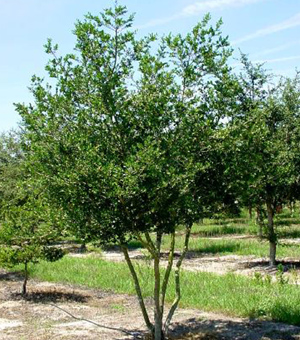Growing your own apple tree is a very gratifying and fulfilling experience. Who hasn't at one time or another longed to roam down the yard and pick a crisp, juicy apple from their very own apple tree. And a huge advantage is you can pick which type to grow, you have a range to choose from to fit all tastes. No need for you to be restricted by the pattern set by industrial growers and grocery stores any longer.
Apple trees like a minimum of 6 hours of Mesa Trees sunlight during summer, but keep in mind they require a spell in the dormant duration, where the winter season temperature level remains in a variety of 32ºF-45ºF. These chilling requirements will motivate regular development in the growing season. The northern hemisphere is where apple trees thrive; they grow finest in cool to cold environments with a moderate summer season and cold winter season. You will discover that it is standard procedure for garden centers to follow the guidelines established by the United States Department of Agriculture, to label their trees, giving you the most appropriate zones where the plants they sell will achieve success.

Due to the fact that of the space taken up by apple trees it is necessary to plan carefully before action is taken, and remember they are in location for a variety of years; there are recordings of some being 200 years old. From time of planting it can use up to ten years for the tree to reach its maximum yield. Apple trees are a deciduous fruit tree, implying that they lose their leaves in winter season, so they can be utilized in a position where summertime shade or winter sun is needed in the garden. Soil preparation and position is vital to gain the rewards an apple tree will offer you. They are quite tolerant where soil conditions are concerned, however if you prepare in advance a plot which has great drain along with a good type of loam soil and a pH reading of 6.5, this will supply the ideal conditions for a great supply of apples and a healthy tree.

Apple trees include 2 parts: the scion and the rootstock which are implanted together to form the tree. The scion is the leading part that forms the branches, leaves, flowers and fruit while the rootstock determines the size of the tree and it's resistance to drought, pests and diseases. The trees can be dwarf, which grow 8-10ft, semi dwarf, 10-15ft or standard trees, which grow 20+ feet yet the fruit produced on all trees can be the very same size.
A lot of ranges of apple trees are self-sterile so 2 varieties, with overlapping bloom times, are required for pollination. I strongly recommend you buy young stock from a nursery, (growing from seed is possible but it takes too long), where your supplier will assist you with your option. The transfer of pollen from one tree to another is primarily carried out by bees so try to motivate these pests into your garden and refrain from using insecticides throughout the duration that they are active.
November is the perfect time to plant, but you can plant as late as March. Apple trees are typically offered bare rooted and when selecting the variety you want, make certain they look healthy. Examine the roots to make certain they are damp and good then keep them that method and plant as soon as possible.
Dig a hole huge enough to accommodate the roots, then put the tree in the hole spreading out the roots out so that they are not entangled. Back fill with soil pressing down firmly to guarantee the roots stay in contact with the soil. Ensure that you keep the graft well above the soil level. You can support the tree with a strong stake at this stage (till it's established), then give it a good beverage of water after you have actually bedded them in. A layer of mulch positioned around the tree will help to maintain wetness and reduce weeds. To secure from irregular temperature levels in winter, raise the mulch higher up the young tree or insulate with old sacks for this cold period only.
When your tree starts to bear fruit, get rid of apples from the tree by securely holding the attachment of the stem and gently twisting the apple till it comes off. They are best consumed directly from the tree for optimum taste but if you're objectives is to store the apples, leave the stem connected, as it helps protect them, and keep in a well ventilated cool, dark, moist place. You will typically discover that a lot of the fruit will ripen together but one way of avoiding this excess is by having apple trees that fruit at different times, so long as there is that overlap duration when they are progressing to assist pollination.
It is rewarding finding out to prune your trees as they require to be formed to allow correct growth. Then you might desire to consider implanting though you might require specific skills or experience to attempt this, if you are interested in increasing your own stock.







